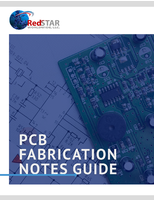Re-Drivers support high-speed serial interfaces.
Press Release Summary:

Designed to re-drive PCIe® Gen I and Gen II signals up to 5.0 Gbps, MAX4950 integrates 4 programmable signal-amplitude buffers, each of which features electrical idle and receive detection. Dual-channel MAX4951 re-drives SATA/eSATA Gen 1, Gen II, and Gen III signals up to 1.5, 3.0, and 6.0 Gbps, respectively. Device preserves signal integrity at receiver by re-establishing full output levels. Operating from single 3.3 V supply, both are specified over 0-70°C commercial temperature range.
Original Press Release:
New Re-Drivers Support PCIe Gen II and SATA/eSATA Gen III Data Rates
PCIe Gen II and SATA/eSATA Gen III data rates supported by Maxim re-drivers.
SUNNYVALE, CA-May 26, 2009-Maxim Integrated Products (NASDAQ: MXIM) introduces two new re-drivers to support the industry's latest high-speed serial interfaces. The MAX4950 is a quad-channel buffer designed to re-drive PCI Express® (PCIe®) Gen I and Gen II signals (up to 5.0Gbps). The MAX4951 is a dual-channel (Tx and Rx) re-driver for SATA/eSATA Gen I (1.5Gbps), Gen II (3.0Gbps), and Gen III (6.0Gbps) signals. These protocol-specific re-drivers are intended for use in storage and computing applications that carry signals over long traces, through passive backplanes and connectors, and then over long cables to either an internal or an external storage device.
New-Generation High-Speed Protocols Need to Counter Signal Losses and Jitter
High-speed serial interfaces such as serial ATA/external serial ATA (SATA/eSATA) and PCIe have now become the de facto standards for transferring and storing data in consumer, industrial, and medical applications.
While PCIe and SATA/eSATA have existed for several years, each respective protocol is now in its second or third generation and is operating at two or more times its original speed. Each protocol typically operates at low signal levels. Meanwhile, low-cost PC boards are becoming densely populated, requiring thinner and longer board traces. This is creating the need for low-loss, high-bandwidth switches and re-drivers to counter the losses and jitter otherwise introduced to the system.
New Re-Drivers Preserve Signal Integrity, Significantly Reduce Total Jitter
The MAX4951 is the dual-channel (Tx and Rx) re-driver for the SATA/eSATA Gen I, Gen II, and Gen III standards. The device preserves signal integrity at the receiver by reestablishing full output levels. It reduces total system jitter (TJ) by establishing a near perfect match and squaring the signal.
The MAX4951 supports SATA out-of-band (OOB) signaling by using high-speed amplitude detection and squelch. Input signals of 50mVP-P or less are detected as off and not passed to the output; signals of 150mVP-P or greater are detected as on and passed through the output. This approach prevents the system from responding to unwanted noise, while still allowing OOB signals to transmit through the MAX4951.
The MAX4951 features a selectable boost to compensate for attenuation from longer trace length cables and to meet SATA/eSATA eye-diagram specifications. The boost programmability is implemented through two integrated, digitally controlled logic inputs to select boost on either channel. The device also features a lower power operation mode. An integrated enable input is used to select the mode of operation. When enable is driven low, the MAX4951 goes into a low-power standby mode, thus reducing power consumption in the application.
Maxim's MAX4950 quad-channel buffer is designed to re-drive PCIe Gen I and Gen II signals. To protect against unwanted noise at the output, the MAX4950 integrates four programmable signal-amplitude buffers, each of which features electrical idle and receive detection. To further preserve signal integrity, the device's programmable input equalization and programmable output deemphasis compensate for circuit-board loss while redriving high-speed signals at PCIe Gen I and Gen II data rates. The MAX4950 is designed for desktops, workstations, and servers that must carry signals through connectors and/or over long cables, midplane stripline, or microstrip on circuit boards while maintaining signal integrity throughout the system.
The MAX4950 also features a power-save mode to reduce quiescent supply current. Power-save mode reduces power consumption in applications where all channels operate simultaneously. To activate the power-save mode, simply drive the P_SAV pin high; drive the pin low to return to normal mode of operation. An enable pin can be driven low to place the device in standby mode, which further reduces power consumption in the system. The MAX4950 is transparent to the system, allowing for multiple possible placements (e.g. near or far from the host, or in-between), and lane recognition by the system.
Both the MAX4950 and the MAX4951 re-drivers operate from a single 3.3V supply, and are fully specified over the 0°C to +70°C commercial temperature range. The MAX4950 is priced at $6.00, and the MAX4951 at $1.50 (1000-up, FOB, USA). Contact the factory for ordering and sampling information. For more information please visit: www.maxim-ic.com/Re-Drivers.
Maxim Integrated Products is a publicly traded company that designs, manufactures, and sells high-performance semiconductor products. The Company reported revenue in excess of $2 billion for fiscal 2008. Maxim was founded over 25 years ago with the mission to deliver innovative analog and mixed-signal engineering solutions that add value to its customers' products. To date, it has developed over 6000 products serving the industrial, communications, consumer, and computing markets. For more information, go to www.maxim-ic.com.
Customer Service: 1-800-998-8800




